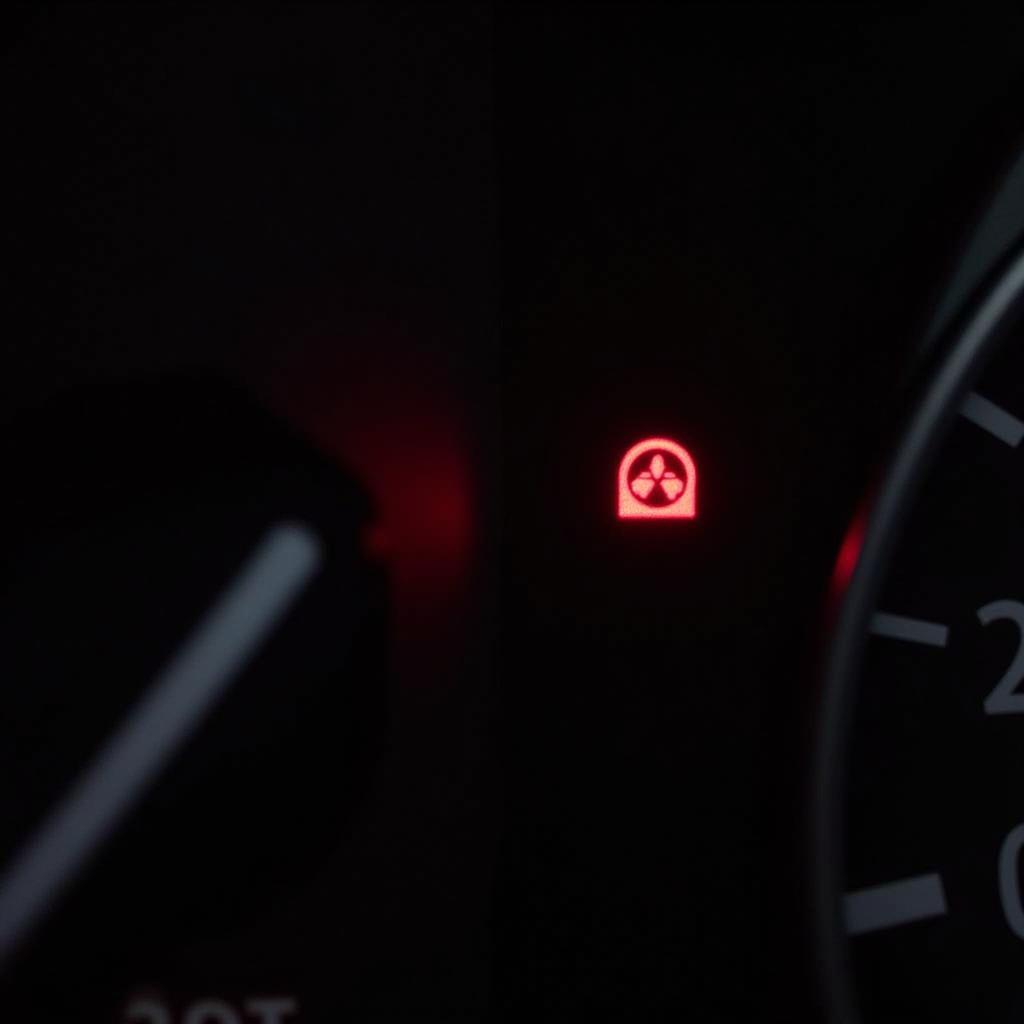The dreaded brake pad warning light on your BMW can be a bit of a shock, but don’t panic! This light simply means your brake pads are nearing the end of their lifespan and need attention. It’s a crucial reminder to get your brakes inspected and potentially replaced soon. In this comprehensive guide, we’ll dive into the common causes of this warning light, how to troubleshoot the issue, and how to reset the light after addressing the problem.
Understanding the BMW Brake Pad Warning Light
The brake pad warning light on your BMW is a vital safety feature that serves as a signal when your brake pads have worn down to a critical level. This light, often accompanied by a warning message on the dashboard, indicates that it’s time to have your brake pads inspected by a qualified mechanic.
Why Does the Brake Pad Warning Light Come On?
There are a few primary reasons why the brake pad warning light might appear on your BMW dashboard:
- Worn Brake Pads: This is the most common cause. The brake pads wear down naturally over time due to friction during braking. When the pads reach a predetermined thickness, the sensor triggers the warning light.
- Faulty Brake Pad Sensor: In rare cases, the brake pad sensor itself might be faulty, causing a false alarm.
- Electrical Malfunction: Sometimes, electrical issues within the braking system, such as a wiring problem, can trigger the warning light even if the brake pads are in good condition.
Troubleshooting the Brake Pad Warning Light
Here’s a step-by-step guide to help you understand and potentially resolve the brake pad warning light issue:
- Inspect Your Brake Pads: If you have some experience with car maintenance, you can visually inspect the brake pads to determine if they are worn down. The brake pads are located behind the wheels. You should be able to see them if you remove the wheel.
- Check for Other Warning Lights: Pay attention to any other warning lights on the dashboard, such as ABS or DSC. If any other lights are illuminated, it could indicate a more serious problem with the braking system.
- Contact a Mechanic: If you’re not comfortable inspecting your brake pads yourself or if you suspect there might be an electrical problem, it’s always best to contact a qualified mechanic. They can properly diagnose the cause of the warning light and perform necessary repairs.
Resetting the Brake Pad Warning Light
Once you’ve addressed the cause of the brake pad warning light, you’ll need to reset the light. This is typically done using a diagnostic tool, such as a BMW-specific code reader. Here’s a general process for resetting the warning light:
- Connect the Code Reader: Connect the diagnostic tool to your BMW’s OBD-II port, usually located under the dashboard.
- Access Brake Pad Settings: Navigate through the diagnostic tool menus to locate the brake pad settings.
- Reset the Warning Light: Follow the specific instructions provided by the code reader to reset the warning light.
Note: The exact process for resetting the brake pad warning light can vary depending on the BMW model and year. Refer to your owner’s manual or consult a qualified mechanic if you’re unsure how to proceed.
Expert Insight
“Always prioritize safety when it comes to brake issues. If you see the brake pad warning light, don’t ignore it. Get your brakes inspected and repaired as soon as possible,” says [Expert Name], a veteran automotive technician.
“Remember, worn brake pads can significantly compromise your braking performance and put you and others at risk. A simple inspection can save you a lot of trouble in the long run,” adds [Expert Name], a certified BMW specialist.
Frequently Asked Questions (FAQs)
Q: How long can I drive with the brake pad warning light on?
A: It’s generally not recommended to drive for an extended period with the warning light on. The brake pads are likely nearing the end of their life and may soon wear completely.
Q: Can I reset the brake pad warning light myself?
A: While some newer BMW models might have the option to reset the light using the car’s onboard computer, it’s generally recommended to consult a mechanic.
Q: How often should I check my brake pads?
A: It’s a good practice to have your brake pads inspected by a mechanic at least once a year or every 12,000 miles, whichever comes first.
Conclusion
The brake pad warning light on your BMW is a crucial signal that your brake pads need attention. By understanding the common causes and troubleshooting steps, you can address the issue promptly and ensure your car’s safety. Remember, neglecting the brake pad warning light can put you and other drivers at risk. If you’re uncertain about any aspect of your braking system, always consult a qualified mechanic.

